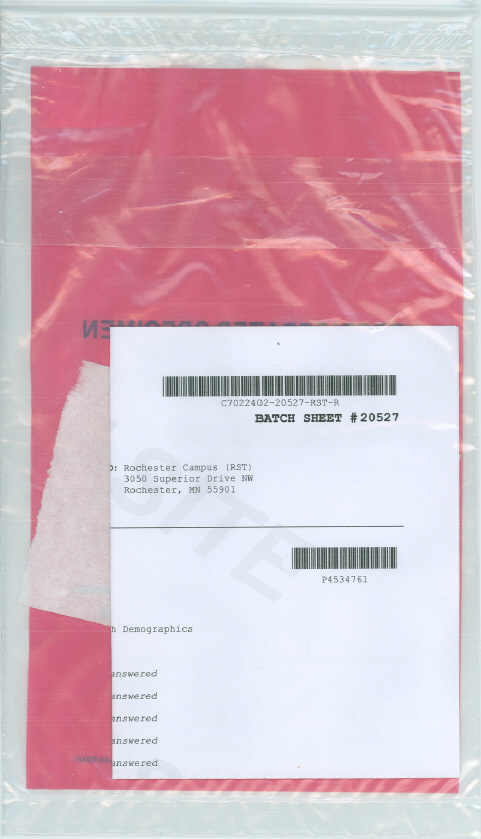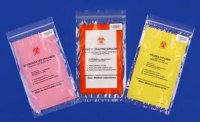Instructions by Specimen Type
Urine Specimens
Step 1:
Determine the Specimen Requirements
In the Test Catalog, use the Specimen and Overview tabs of each test to identify:
- Patient preparation requirements
- Specimen requirements
- Specimen container requirements
- Specimen stability (temperature) requirements
- Collection instructions
- Required forms or special instructions Whether a preservative must be added at the start of the collection. See the Urine Preservatives Chart for conditions and concentrations of urine preservatives.
Step 2:
Give Urine Collection Instructions to the Patient (24-hour Collections)
If a 24-hour collection is required, print the 24-Hour Urine Collection Instructions for the patient.
When you give the instructions and 24-hour collection container to the patient, review:
- Collection duration
- Diet requirements
- Potentially hazardous preservatives in collection container
- Storage of the specimen until it is returned
Step 3:
Pour the Specimen into an Aliquot Tube or Bottle
Mix well before aliquotting.
- Send urine aliquots in the following leakproof containers only. Other containers could leak and compromise the specimen.
- Some specimens require light protection to ensure specimen integrity. Check the list of Light Protection Tests before packaging your specimen, and use amber containers to prevent analyte degradation due to exposure to light (for 24-hour collections).

|

|

|
T068 Urine Tube, 13 mL
Standard aliquot tube for random collection. |
T313 Urine Container, 60 mL
Standard aliquot container for 24-hour collection. |
T596 Urine Container, Amber, 60 mL
Aliquot tube for 24-hour collections when testing for light-sensitive analytes. |
Step 4:
Label the Specimen
Specimens must have two person-specific identifiers on the patient label. Person-specific identifiers include:
- Accession number
- Patient's first and last name
- Unique identifying number (for example, medical record number)
- Date of birth
Mislabeled Specimens
Specimens are considered mislabeled when there is a mismatch between the person-specific identifiers on the specimen and the information accompanying the specimen. This information might include a computer system, requisition form, or additional paperwork.
In addition, if a handwritten name and a label are on the container, the information must match exactly. For example, "Rebecca" does not match "Becky." When insufficient or inconsistent identification is submitted, a new specimen may be required.
Step 5:
Package the Specimen in a Biohazard Bag
Place the tube or container in a Mayo Clinic Laboratories color-coded (temperature-specific) shipping bag.

T043 Biohazard Bag - 12x15 Use if your container is too large for color-coded bags. Mark it Frozen, Refrigerate, or Room Temp (Ambient).
Electronic Clients:
- Clients who submit electronic orders will have a batch order. Place all specimens for the temperature-specific batch number into one bag. If all the specimens do not fit, use a larger biohazard bag (T043) and indicate the shipping temperature.
- Do not place multiple batches into one bag.
- The bag must be leakproof.
- There must be absorbent material between the primary receptacle (tube/container) and the secondary packaging (bag) that is able to absorb the entire contents of the bag.
- Wrap any breakable tubes individually in bubble wrap (T055).
Step 6:
Package Batch Sheets and Forms

Folded batch sheet with bar code and delivery address visible
Electronic Clients
Clients who submit electronic orders will have a batch sheet. The bottom of the batch sheet lists the number of pages (for example, 1 of 3). Fold the batch sheets into fourths and place them in the outside pocket of the bag. If there is no pocket, place them inside the bag with the specimens. Include all pages in the corresponding bag. The delivery address and bar code, if applicable, must be visible. Do not combine multiple batches into one bag.
Manual Clients
Clients who do not order electronically must include a completed Test Request form with each patient specimen. Fold and insert the forms into the outside pocket of the biohazard bag. If there is no pocket, place the forms inside the bag with the specimen.




